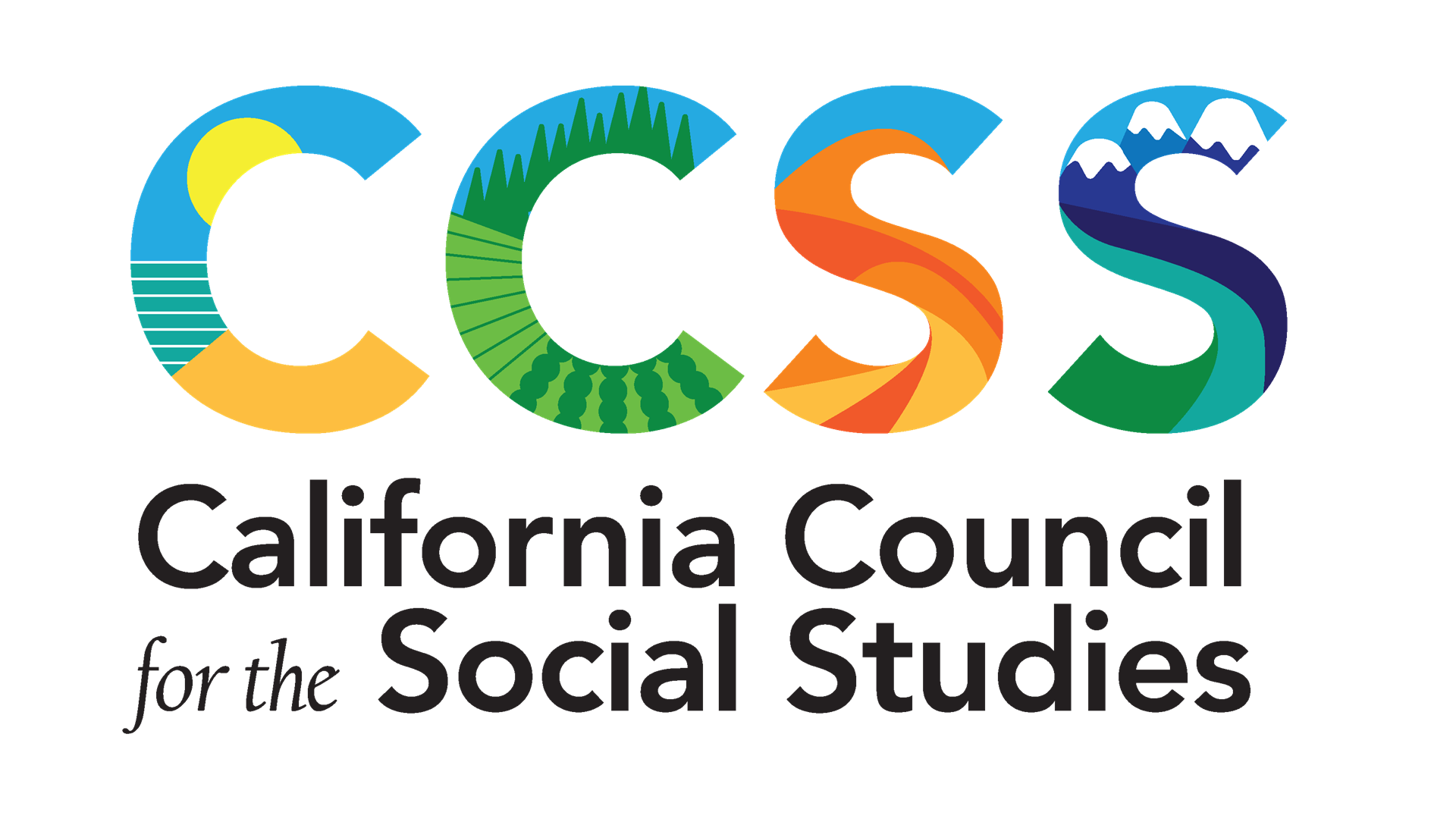Social Studies and Common Core State Standards
by
Margaret Hill, Chair of Publications and Technology Committee, California Council for the Social Studies
More Resources:
Common Core Aligned History-Social Science Lessons http://www.ccss.org/Common_Core_Aligned
Common Core & Social Studies Professional Development http://www.ccss.org/CC_&_Soc_St_PD
To share other Common Core resources for social studies, email the URL and short descriptor to drpeghill@verizon.net for review.
HOW DO COMMON CORE STANDARDS & H-SS RELATE?
|
California’s Common Core ELA Standards are built on an assumption that reading, writing, speaking, listening, and language is a shared responsibility within the school in order that all students graduate with college and career readiness. The K–5 ELA Common Core State Standards include expectations for reading, writing, speaking, listening, and language applicable to a range of subjects, including social studies. The grades 6–12 standards are divided into two sections, one for ELA and the other for history/social studies, science, and technical subjects.
It is now recognized by many educational researchers that quality social studies instruction is critical not only to the future success of the social, economic, and political system but to the immediate and measurable success of student performance on the ELA Common Core State Standards. When the Standards first came out, Daisy Martin of the National History Education Clearinghouse http://teachinghistory.org/nhec-blog/25306 described this connection showing how many social studies educators who have organized their classroom around inquiry and primary sources supported by student writing and discussion have already been “implementing” the Common Core Standards with marked success.
The California Council for the Social Studies is working with Stacy Greer, H-SS Programs Consultant, at the California Department of Education to provide members with key information, lessons, resources, and learning opportunities to provide language rich and inquiry-based social studies instruction. Common Core Standards Professional Learning Modules are now available from the California Department of Education, the Curriculum and Instruction Steering Committee of the California County Superintendents Educational Services Committee, and from other states.
Common Core State Standards
http://www.cde.ca.gov/re/cc/
This California Department of Education site has copies of both common core state standards documents: California Common Core Standards for English Languages Arts and Literacy in History/Social Studies, Science, and Technical Subjects and California Common Core Standards in Math. Also at this page is the Common Core implementation and assessment plan for California and is the site where the CDE posts Common Core related documents and other information for use by schools in professional development.
SOCIAL STUDIES RESOURCES THAT SUPPORT COMMON CORE
|
Preparing Students for College, Career and Citizenship: A California Guide to Align Civic Education and the Common Core State Standards for English Language Arts and Literacy in History/Social Studies, Science and Technical Subjects
http://commoncore.lacoe.edu/documents/preparing_students_civic_education_connections.pdf
This guide provides a rich set of ideas for civic learning at each grade level while teaching the Common Core State ELA Standards.
History Explorers: Historical Literacy and the Common Core
http://www.thinkfinity.org/groups/americanhistory/blog/2013/04/29/historical-literacy-and-the-common-core
This Thinkfinity Blog site provides lots of information for teachers about implementing Common Core State Standards and has great promise for providing a way for teachers to share both their questions and their achievements.
Nonfiction Minute
http://www.nonfictionminute.com/
If you are struggling for ideas in how to infuse Common Core's increased inclusion of Informational Text in classroom instruction, this new blog by children's authors promises to be a great assist. The topics integrate history, science, geography and more. These short written-oral contributions for students will be posted every day of the traditional school year. There will be an archive of past posts for teachers to use if they missed that entry.
The Source California History-Social Science Project
"Teaching the Common Core" – Special 2013 Issue
http://chssp.ucdavis.edu/source-magazine/teaching-the-common-core
School Library Journal
"On Common Core - Deconstructing Nonfiction" - January 8, 2013
http://www.slj.com/2013/01/standards/common-core/deconstructing-nonfiction-on-common-core/
Text structures are important when considering how a book is constructed. Understanding of text structures helps students understand how the different elements
of a nonfiction book work together to contribute to the overall meaning.
"On Common Core - Talking about Nonfiction" - February 4, 2013
http://www.slj.com/2013/02/curriculum-connections/on-common-core-talking-about-nonfiction/
To fully access what they are reading, students need time to process it, and that processing is often most effective when done out loud.
"On Common Core - Nonfiction as Mentor Text" - March 30, 2013
http://www.slj.com/2013/03/books-media/collection-development/on-common-core-nonfiction-as-mentor-text/
This article looks at how selected books help students think about "the big picture," gaps in information, personal relevance, perspective taking, and alternatives to chronology.
"On Common Core - Non Fiction as Mentor Text: Style" - May 2, 2013
http://www.slj.com/2013/05/curriculum-connections/nonfiction-as-mentor-text-style-on-common-core/
In their writing non fiction writers model specific styles and techniques that demonstrate a command of the written word, connect with and hook readers, and explain and contextualize important concepts. This article provides examples from specific books so teachers don't have to spend time searching for just the right source
